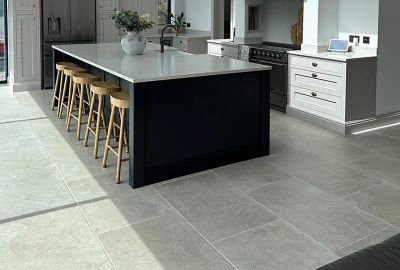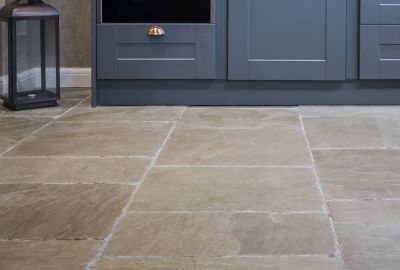If you have natural stone tiles or porcelain tiles, you might have experienced just how frustrating it can be to discover any of your tiles looking out of place and uneven.
This is called ‘tile lippage’ can be an occurrence for tiled floors, due to a number of unfortunate reasons. Though, uncovering why your floor suffers from lifting tiles can go beyond reasons surrounding your tiler's skills!
There are many reasons why this sort of issue might occur, from poor quality sub-flooring to the finish on your tiles, but the challenge comes in working out which of these areas might be the cause of your problems.
So, to give you a helping hand, we’re going to explain what tile lippage is, and how to avoid it in the first place.
What is tile lippage?
Although it’s not a well-known term to most people, tile lippage is the specific phrase used in the industry to identify any floor tiles which have edges or corners sitting higher or lower than those around them, creating an uneven surface.
Naturally, this is exactly the sort of issue you want to avoid when laying your tiles and it can even risk becoming a trip hazard if it occurs in a prominent spot on the floor in a high-foot traffic area.
![]()
What causes tile lippage?
There are several contributing factors that may result in lippage, all of which can occur at some point during the tile installation process:
- Bumpy subfloor: when it comes to the most common reason for uneven tiles, the biggest culprit is certainly having a bumpy subfloor. To put it simply, having a subfloor that’s covered in marks, humps, or jagged cracks is a surefire way to ensure that your tiles are going to sit at different heights. After all, if your base floor isn’t flat, why would your tiles be?
- Warped tiles: bowed and warped tiles are also major contributors, especially if you’re using larger porcelain tiles. This can be an unfortunate side effect of how the tiles are constructed, though don’t worry - clearly warped tiles should not get past the inspection process.
- Uneven thicknesses: some natural stone tiles, especially commercial ‘second’ grade products, also might not have been calibrated properly during the cutting process, making them uneven in thickness. At Stone Superstore, we only offer 1st grade products to avoid the lippage issues caused by calibration issues.
- Poor installation: there may be scenarios where the tiler you hired is at fault for the resulting unevenness to your floor. This is usually down to inexperience on their part, which is why it’s very important to hire a professional and reputable layer for your tiling needs.
How to avoid tile lippage
If you’re looking for quick fixes on how to fix tile lippage, sadly, it isn’t an easy job. Unless you catch it during the installation stage, there isn’t a guaranteed, effective way to fix lippage once the adhesive has dried, without tearing your newly laid tiles up and starting again. This is what makes it so important to prevent tile lippage to begin with.
- Carry out a dry run: first and foremost, if you want to avoid lippage like this, it’s always wise to carry out what’s known as a tiling dry run. This involves laying down your tiles without adhesive to see how they will look once properly installed and will quickly give you an idea of where your floor might be uneven, allowing you to sort the problem straight away.
- Flatten your subfloor: as for flattening your subfloor, this is a simple enough process and only requires you to pick an appropriate levelling compound. All you must do then is follow the instructions on the product and you’ll have a flat floor in no time. If you’re finding it difficult to flatten your subfloor, read our guide to tiling on uneven surfaces.
- Identify warped tiles: when it comes to dealing with potential tile warpage, while somewhat unavoidable, you can still mitigate the potential for this by ensuring all of your tiles come from the same batch. That way, you know they’ve all been cut at the same time and are less likely to be mismatched. You should also make sure you buy good-quality tiles, such as those from Stone Superstore!
Now, while we can’t recommend a professional tiler to you who has experience in avoiding lippage, there are a few things you can keep an eye out for when discussing your tiling needs with your chosen layer.
For example, a professional tiler should always discuss with you their required needs to complete the job. This should include any issues which will affect the installation, such as the quality of the surface required, and the type of tiles being fixed. On top of this, you should ask them any questions relating to lippage to see how much they know.
Finally, if you’ve already laid your tiles and are wondering how to hide tile lippage, you can use grout to mask the height difference. This has the added benefits of absorbing tile movements when they expand and prevents visible lippage from getting worse.
You should now have a clearer idea on tackling lippage before it becomes an issue. Of course, if you have more questions on this subject and want to speak to an expert, then you can contact our experts on the Stone Superstore team.
Don’t forget to browse the rest of our tile installation advice guides as well for more helpful articles like this one.



